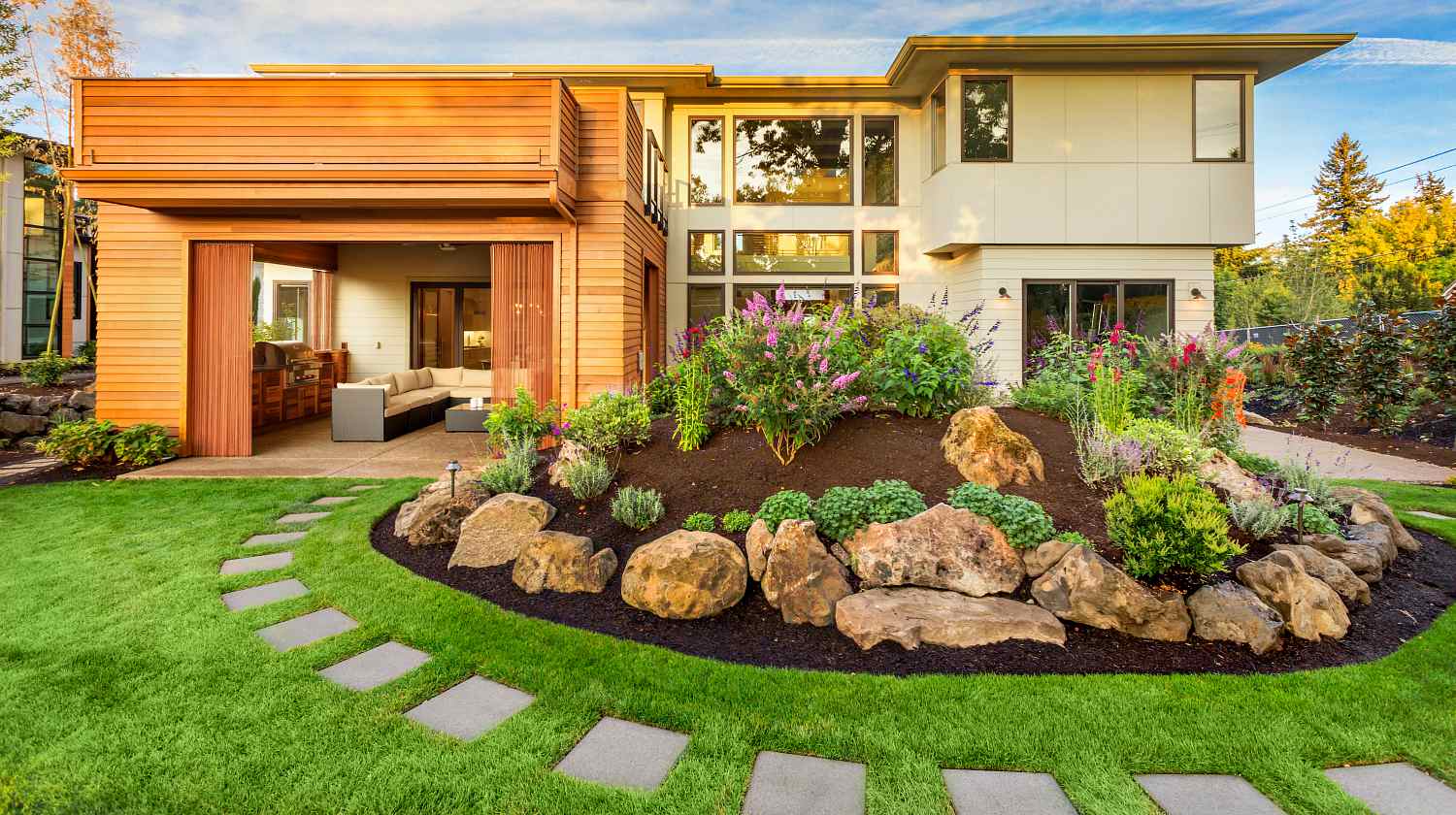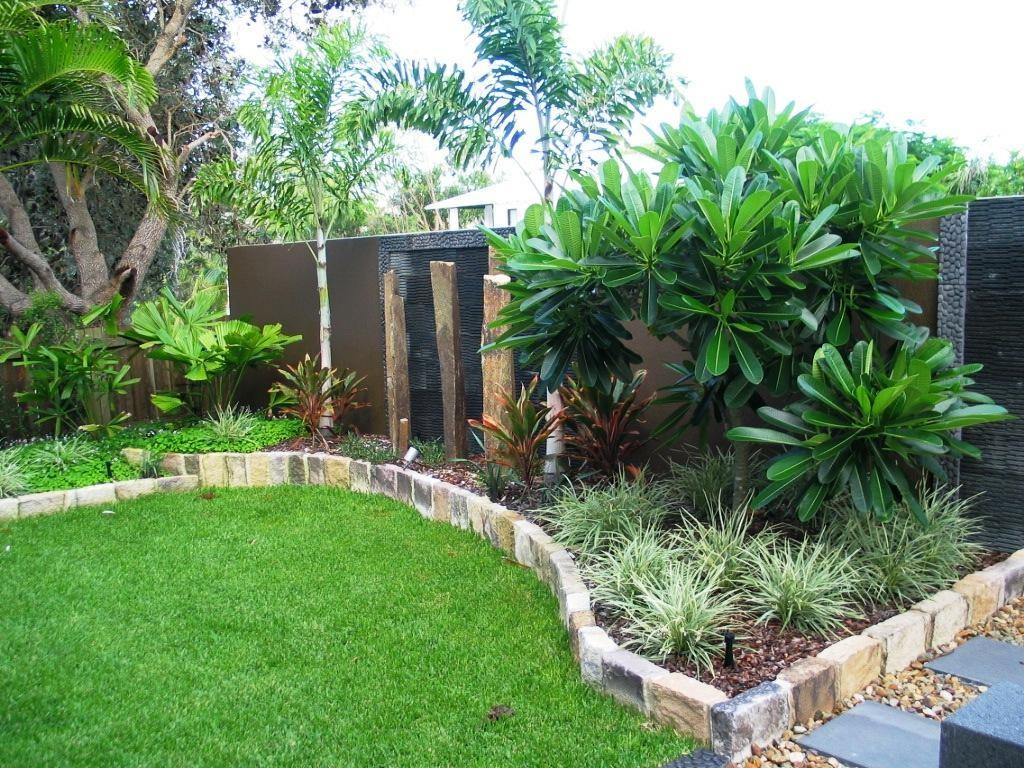Creating a Complementary Garden Design

A garden that complements your home's architecture creates a harmonious and visually appealing outdoor space. It's about establishing a connection between the built and natural environments, enhancing the overall aesthetic appeal of your property.
Using Garden Elements to Connect the Garden and Home
Garden elements like pathways, walls, and fences can play a crucial role in visually connecting the garden to the house. They act as visual bridges, guiding the eye and establishing a sense of flow between the two spaces.
- Pathways: Curved pathways can mimic the flow of a winding staircase or the curves of a bay window, creating a visual link between the house and the garden. Straight pathways can complement a modern or minimalist home, emphasizing clean lines and geometric shapes.
- Walls and Fences: Matching the material or style of the house's exterior walls with the garden walls or fences creates a unified look. For example, using stone walls in a garden that complements a stone house enhances the architectural theme. Alternatively, a picket fence can complement a cottage-style home, adding to its charm.
Incorporating Architectural Elements into Garden Design
Integrating elements of the home's architecture into the garden design strengthens the connection between the two spaces. This can be achieved by using similar materials, colors, or design motifs.
- Materials: If your home features stone or brick, consider using these materials in the garden for pathways, walls, or retaining walls. Using wood in the garden can complement a home with wooden accents or a wooden deck.
- Colors: Incorporate colors from the house's exterior into the garden design. For example, if your house has a red brick facade, consider using red flowers or foliage in the garden. Using similar shades of green for foliage and the house's trim can create a harmonious look.
- Design Motifs: If your home has architectural features like arches or columns, consider incorporating similar motifs into the garden. For example, an archway made of trellises can create a visual connection to the arched windows of the house.
"A well-designed garden should complement the architecture of the house, creating a harmonious and visually appealing outdoor space."
Selecting Plants and Flowers

Choosing the right plants and flowers is crucial for creating a garden that complements your home's architecture. The goal is to select species that harmonize with the style, color palette, and overall feel of your house. This includes considering factors like plant height, shape, and color, as well as their textures and foliage variations.
Matching Plants to Architectural Styles, Designing a garden that complements your home's architecture
Plant selection should align with the architectural style of your home. This means choosing plants that complement the lines, shapes, and textures of the building.
- Traditional Homes: Traditional homes often feature symmetrical layouts, ornate details, and classic color palettes. To complement this style, choose plants with similar qualities. Consider planting trees with rounded shapes, like Japanese maples or weeping willows. Flowers like roses, hydrangeas, and peonies can add a touch of elegance and fragrance.
- Modern Homes: Modern homes emphasize clean lines, geometric shapes, and a minimalist aesthetic. Plants should reflect this simplicity. Consider planting trees with upright forms, like Japanese black pines or Italian cypress. Flowers with bold colors and interesting textures, like succulents or ornamental grasses, can add visual interest.
- Mediterranean Homes: Mediterranean homes are characterized by warm colors, stucco walls, and terracotta roofs. Plants should evoke a sense of the sun-drenched Mediterranean landscape. Consider planting trees like olive trees or citrus trees. Flowers like lavender, rosemary, and bougainvillea are well-suited for this style.
- Cottage Homes: Cottage homes are typically cozy and charming, with informal layouts and natural materials. Plants should reflect this relaxed and inviting atmosphere. Consider planting flowering shrubs like lilacs or rhododendrons. Flowers with cottage-garden charm, like daisies, poppies, and foxgloves, can add a whimsical touch.
Maintaining a Cohesive Design: Designing A Garden That Complements Your Home's Architecture

A well-designed garden should feel like a unified whole, with each element complementing the others. This sense of unity is achieved through a consistent design that flows seamlessly from one area to the next.
Using Repetition and Symmetry
Repetition and symmetry are powerful tools for creating order and balance in a garden design. Repetition can be achieved through the use of similar plants, materials, or shapes. For example, you might plant a row of identical shrubs along a walkway or use the same type of stone for the edging and the patio. Symmetry, on the other hand, involves mirroring elements on either side of a central axis. This can be as simple as placing two matching trees at the entrance to the garden or as complex as creating a symmetrical layout for the entire space.
"Repetition and symmetry are key principles of garden design, creating a sense of order and harmony."
Essential Questionnaire
Designing a garden that complements your home's architecture - What are some common architectural styles and how do they influence garden design?
Popular architectural styles include Victorian, Colonial, Modern, and Mediterranean. Each style has unique characteristics that influence the garden design. For example, a Victorian home might feature a garden with lush greenery, climbing vines, and intricate landscaping, while a modern home might call for a minimalist garden with clean lines and geometric shapes.
How can I incorporate my home's architectural elements into my garden design?
You can incorporate elements like materials, colors, and shapes found in your home's architecture into your garden design. For example, if your home has brick accents, you can use brick pavers for pathways or incorporate brick planters into the garden. You can also choose plants with colors that complement the home's exterior and use similar architectural details, such as trellises or arbors, to create visual connections between the house and the garden.
What are some tips for selecting plants that complement my home's architectural style?
When selecting plants, consider the home's architectural style, color palette, and scale. For example, a Victorian home might benefit from plants with delicate flowers and intricate foliage, while a modern home might call for bold foliage and geometric shapes. Also, consider the plant's mature size to ensure it doesn't overwhelm the garden or the home.
